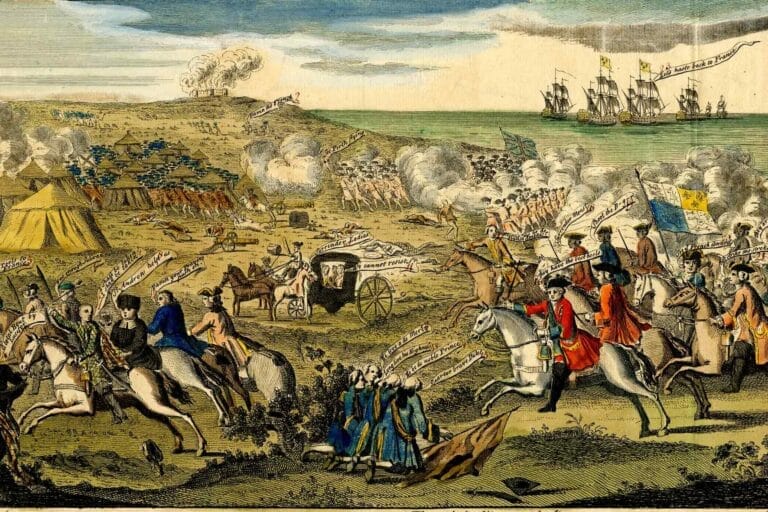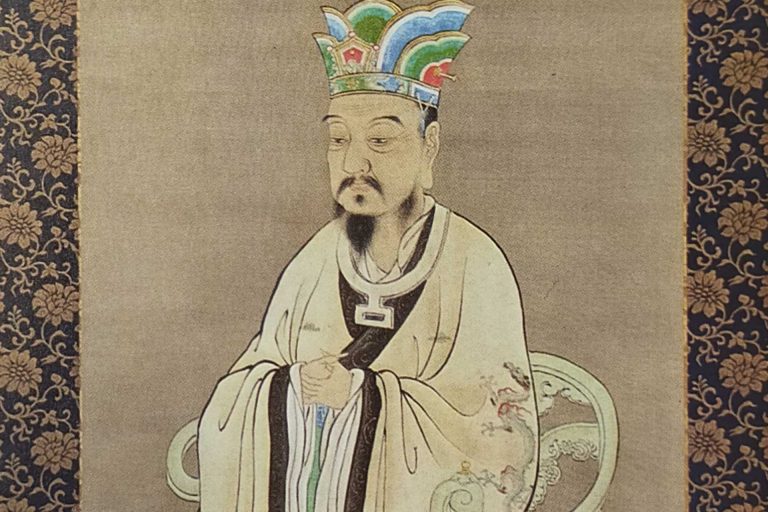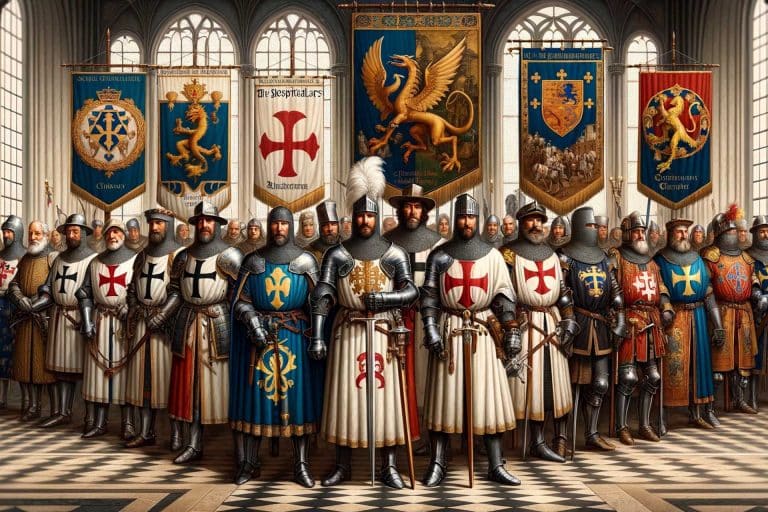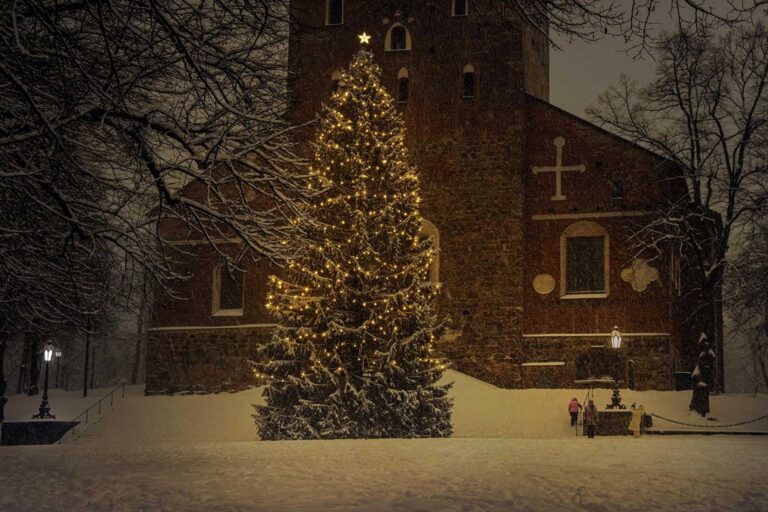Kings, Cardinals, and Chaos: Inside the Thirty Years’ War
Europe, 1618 — a continent fractured by religion, greed, and ambition, teetered on the brink of catastrophe. The Thirty Years’ War began with a spark in Bohemia that soon engulfed an entire continent. When Protestant nobles hurled Catholic envoys from the windows of Prague Castle, defying the Habsburg Empire, they ignited a conflict that would rage for a generation. For thirty relentless years, armies swept from the snows of Scandinavia to the plains of Germany, leaving famine, disease, and ruin in their wake — a war that reshaped Europe and scarred it forever.
The Thirty Years’ War (1618–1648) was not simply a religious war: it was a contest for power, for existence and for the future of Europe. Kings, cardinals, generals, and mercenaries – all fought in the name of faith, but were motivated by personal power and ambition. When the fighting finally stopped, regions were depopulated, millions were dead, and the political map of Europe changed forever. Out of the ashes of the Thirty Years’ War would come a new way of thinking about sovereignty, diplomacy and the state – forged in the fire of unparalleled destruction.
The Spark in Bohemia
The First Defenestration of Prague marked the beginning of the Thirty Years’ War. The fighting did not start with marching armies, flags unfurled, or declarations of war. It was the product of a moment’s rage.

The Thirty Years’ War started with three Catholic governors, two Protestants, and a window.
On May 23, 1618, a group of Protestant nobles marched into Prague Castle. Storming the rooms of the Catholic imperial governors, the deputations pulled out two imperial governors and their secretary and tossed them out of a third-story window. The three men survived—Catholics said angels had saved them; Protestants said they landed in a pile of manure. The Defenestration of Prague was a declaration of rebellion. A century of tensions in the Holy Roman Empire boiled over, a spark that would burn Europe.
The rebellion began in Bohemia. The Protestant nobility of the Czech lands resisted the increasing power of the Catholic Habsburgs. Emperor Ferdinand II wanted to restore the authority of Catholicism and the crown over his Protestant subjects and reverse the years of religious toleration since the Peace of Augsburg of 1555. Bohemia’s Protestant nobility decided it could not risk the emperor’s power and his determination to roll back religious freedom. The nobles rose up, deposed the king, and offered the crown of Bohemia to Frederick V, the elector of the Palatinate. Frederick, a Protestant prince, accepted. He was quickly crowned in Prague, but his reign as “king of Bohemia” was brief and ended in humiliation.
The following November of 1620, the Protestant revolt was defeated on the field of White Mountain, outside of Prague. The Protestant army was outnumbered, poorly organized, and lacked the experienced leadership of the opposing Imperial and Catholic League forces. Commanded by General Tilly, Catholic troops smashed through the Bohemian army and pursued the survivors to Prague.
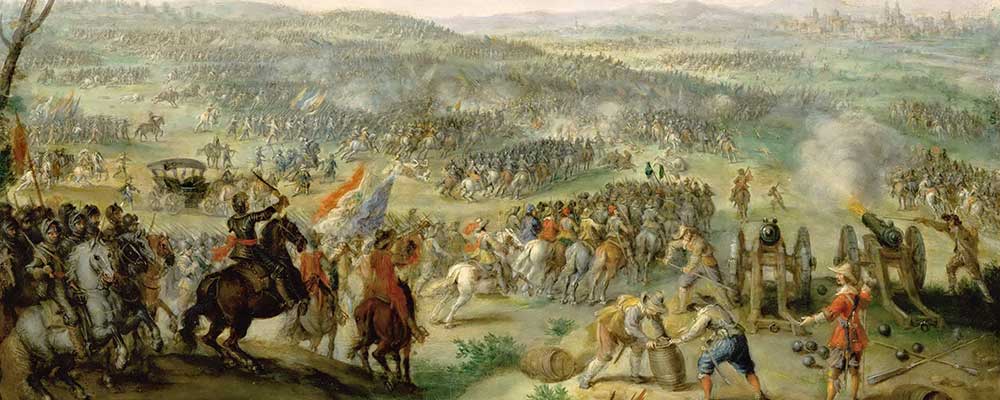
In the aftermath of the battle, the leaders of the revolt were executed, their property seized by the emperor, and Bohemia was forcibly re-Catholicized. The Battle of White Mountain seemed to offer the emperor an opportunity. Emperor Ferdinand II was emboldened and believed God was on his side. The king moved to bring the other Protestant princes of Germany to heel and enforce his own will across the empire.
The battle was not a conclusion, but an expansion. Protestant nobles in Germany believed Ferdinand’s actions were nothing less than tyrannical. Denmark, Sweden, and France, outside powers, began to see the conflict as an opportunity amid the empire’s uncertainty. A rebellion in Bohemia turned into a full-scale war across the continent.
In the years that followed, the firestorm of Bohemia spread across Europe. Armies marched in God’s name but fought over land, money, power, and survival. The First Defenestration of Prague opened a wound in the heart of Europe that would bleed for 30 years and leave the continent forever changed.
The War Expands: The Imperial and Catholic Triumphs

The consequences of the Bohemian Revolt’s failure were swift and brutal. The forces of the Holy Roman Emperor swarmed across central Europe. As the vanguard of Imperial power, the Catholic League, led by Count Johann Tserclaes von Tilly, carved a bloody swath through the German principalities. Rising in Tilly’s shadow was the more mysterious Albrecht von Wallenstein, a wealthy Bohemian noble who raised his own 100,000-man mercenary army in the Emperor Ferdinand II’s name. By the early 1620s, the Protestant cause lay in ruins, its rebellious territories reconquered and its armies routed.
The Imperial and Catholic League armies rampaged through German lands, leveling the countryside and pillaging the cities. Mercenaries, too often unpaid and undisciplined, lived off the fat of the land and the flesh of its inhabitants, and many peasants starved to death from famine and disease.
Whole areas of the country were laid to waste; contemporary chroniclers described entire regions as “deserts inhabited only by wolves and crows.” The Palatinate, the Upper and Lower Rhine, Württemberg, and Saxony — every Protestant leader was deposed or coerced into swearing fealty to the Emperor, and religious tolerance was beaten out of existence by a grinding Counter-Reformation boot.
Seizing the opportunity, Ferdinand II set about remaking the empire in his Counter-Reformation image. Protestant clergy were expelled, churches desecrated and converted to Catholicism, and the laws of the Catholic Church reimposed in all conquered lands. The Edict of Restitution, decreed in 1629, stipulated that all land confiscated by Protestants since 1552 be restored to the Catholic Church, and even the most moderate German princes turned against the Emperor. To many, the Emperor’s religious fervor was a mere mask for political tyranny.
Wallenstein, at the head of a 100,000-man-strong mercenary army, was the emblem of this transformation. He dreamed not of a war of religion but of one for imperial supremacy. His campaigns in northern Germany in 1627 and 1628 brought Habsburg power to the very shores of the Baltic Sea, to the gates of the Protestant strongholds of Brandenburg and Mecklenburg, and to the attention of the neighboring kingdoms of Denmark and Sweden. Even the Emperor’s closest allies were beginning to fear Wallenstein’s growing autonomy and personal power.
The Protestant cause, on the other hand, lay in tatters by the end of the 1620s. Its leaders were either dead, exiled, or broken. The Catholic League and Imperial forces seemed invincible, their standards flying across Europe. But in this success, new enemies were born. Protestant foreign powers — Denmark first, then Sweden — began to organize intervention in support of the Protestant cause. By the end of the decade, they would intervene in the Empire, setting Europe ablaze in the Thirty Years’ War.

The Intervention of Kings
The first great monarch to intervene in the conflict was Christian IV of Denmark. A devout Lutheran and one of Europe’s wealthiest rulers, Christian entered the Thirty Years’ War in 1625 to defend Protestant interests in northern Germany — and his own influence within the Holy Roman Empire. Backed by English and Dutch funds, he raised a sizable army but soon faced the formidable Imperial generals Tilly and Wallenstein. The campaign proved disastrous. The Danes suffered crushing defeats at Lutter (1626) and later across the northern plains, forcing Christian to retreat to Denmark. The Treaty of Lübeck (1629) restored peace on humiliating terms, stripping him of any German ambitions.
Denmark’s failure, however, did not end Protestant hopes. In 1630, the Swedish king Gustavus Adolphus — known as the “Lion of the North” — landed in Pomerania with a disciplined and modern army. A devout Lutheran, Gustavus combined religious conviction with brilliant tactics, introducing mobile artillery and flexible formations that revolutionized warfare. His arrival transformed the conflict from a German civil war into an international struggle for dominance. Under his leadership, the Swedish forces scored stunning victories, beginning with the Battle of Breitenfeld in 1631, where Tilly’s seemingly invincible army was annihilated.
Gustavus Adolphus’s success revived Protestant morale across Europe. His campaigns swept through Germany, liberating Protestant cities and uniting once-fractured forces under his banner. At Lützen in 1632, he faced Wallenstein in one of the war’s most ferocious battles. Though the Swedes emerged victorious, the triumph came at a terrible cost — Gustavus himself was killed leading a cavalry charge through the fog. His death stunned Europe. The grand Protestant champion was gone, and with him, the war lost one of its few figures of integrity and vision.

In the aftermath, Sweden’s generals continued the fight, but internal divisions and war-weariness weakened their resolve. The dream of a united Protestant front against Habsburg domination began to fracture once again. Yet Gustavus’s legacy endured: his reforms in discipline, logistics, and battlefield tactics reshaped European warfare for generations.
The death of Gustavus Adolphus marked a turning point. The conflict, once driven by faith and ideology, had now become a struggle for balance of power among monarchs. As Sweden’s influence waned, a new player — Catholic France — prepared to enter the fray, not in defense of faith, but in pursuit of political dominance. The Thirty Years’ War was far from over; in many ways, it had only just entered its most ruthless phase.
The Age of Cardinals and Diplomats
The Thirty Years’ War became largely secularized by the mid-1630s. For example, in 1635, France, a deeply Catholic country, joined the war on the Protestant side. Cardinal Richelieu, the chief minister of King Louis XIII, set French policy. He was not driven by religious fervor or moral outrage but rather by a desire to strengthen France and to see it rise as a dominant power. The Habsburg dynasty, one of the most powerful families in Europe, ruled both Spain and Austria.
Richelieu supported the Protestant states financially and eventually led France into war against Habsburg hegemony. He chose to side with the Protestant forces, thereby weakening and fighting his Catholic enemies. The cardinals Richelieu and Mazarin were determined to guide France to become the premier European power. France now fought against the Habsburgs not out of religious conviction but out of dynastic and geopolitical rivalry.
The war now became a fight for dominance in central Europe. This is known as the Franco-Swedish Phase of the war and lasted from 1635 to 1648. The armies of France and Sweden ravaged Germany, Flanders, and northern Italy, while Spain and the Austrian Habsburgs struggled to hold onto their territories. Many of the religiously inspired armies of the early period were replaced by mercenaries. There was little profit in fighting so for many troops, there was little to fight for but the chance of plunder and foraging.
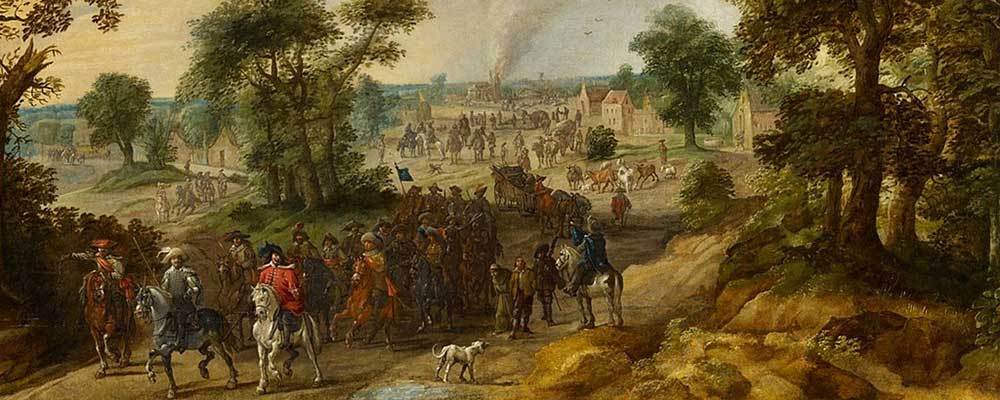
Loyalties were no longer based on faith but on national interests. The rest of Europe soon took notice and realized that the previous dynamics of the war had changed and that France was now in the war to fight the Habsburgs.
The phase is characterized by France and Sweden militarily defeating the Habsburgs. French troops invaded the Spanish Netherlands and, under Richelieu’s able leadership, took over additional Imperial territories along the Rhine. Lennart Torstensson, another notable Swedish commander, led the Swedish army and caused havoc in central Europe. The three-way rivalry between the French, Austrians, and Spanish helped fuel the Franco-Swedish phase. The phase was so devastating, famines, disease, and depopulation were at their peak. France, at the time, benefited from the sheer destruction of the Thirty Years’ War, beginning to gain influence on the European political scene.
Mazarin replaced Richelieu as chief minister to the king when the latter died in 1642. He stayed consistent in continuing the policies and objectives of Richelieu and did not shy away from fighting. However, Mazarin balanced military successes with diplomacy. The French, under the leadership of the cardinals, eventually emerged from the war as the dominant European power. Spain’s military defeat against the French at Rocroi in 1643 and Lens in 1648 shattered the myth of Habsburg invincibility. The French victory at Rocroi marked the end of the Spanish army’s reputation as Europe’s finest. Mazarin had ensured that France was to be the dominant force in the postwar order and not the Holy Roman Empire.
In the late 1640s, all the countries involved were tired from the war. But the cardinals, Richelieu and Mazarin, had achieved their goals. Faith no longer played a major role in the war, as diplomacy and national interests took precedence. The French emerged from the Thirty Years’ War as the dominant European power, and the map of modern Europe was beginning to take shape through blood, faith, and brilliant statecraft.
The Human Cost of Chaos
No war in European history before the Thirty Years’ War had caused as much suffering. In the German lands, where most of the fighting took place, whole areas were devastated by hunger, disease, and death. It is believed that as many as a fifth or a third of the population died; in some regions, the casualties were even higher. Cities such as Magdeburg were levelled to the ground after their violent sack, and entire villages had disappeared. The once-rich Holy Roman Empire, with its extensive farmlands and prosperous cities, had been transformed into a scarred, starving wasteland of ashes.

But the fighting was not the only reason for the suffering. Mercenary armies often unpaid for months at a time forced the civilian population to provide them with food and shelter, or else raped and pillaged. The sack of Magdeburg in 1631 was to become known across Europe, as an atrocity so horrific that even experienced soldiers were appalled by the sight of bodies piled high in the streets and in churches.
Disease ran through every army, and many troops and civilians were to die of it. The “German pestilence”, as it became known, killed more people than battle. Nobles who had presided over large estates were left impoverished; monasteries were looted and trade routes disappeared under the constant threat of attack.
Peasants took refuge in the woods, where they lived off bark, roots, and the remains of burned fields. Entire villages and towns were depopulated, and chroniclers of the time speak of “empty churches and empty cradles.” Whole villages were to disappear for the first time in European history, not by military defeat or conquest, but by starvation and despair. Central Europe was to become a graveyard, its inhabitants to be forever haunted by the sights of marching armies and burning skies.
The psychological impact was also to be of a size and nature that was hitherto unknown. Generation after generation had been born, raised and lived only to know war. Soldiers had switched sides to whichever power could pay them; priests had buried their faith under politics. The line between soldier and bandit was blurred by the deserters who roamed the countryside like wild animals. The psychological scars of the war years would remain long after the guns had fallen silent in 1648. Long after the lost population, the broken families, and the shattered trust between rulers and the ruled had yet to be healed.
In 1648, the heart of Europe was in ruins. The Thirty Years’ War had started as a religious war but ended as a testament to the folly of human ambition. A new political order would rise out of the ashes. Still, for those who had experienced the transformation firsthand, the price of that transition was nothing less than the destruction of civilization itself.
The Peace of Westphalia (1648)
Thirty years of bloodshed and destruction had finally exhausted Europe’s ruling dynasties. The upshot was the Peace of Westphalia: a diplomatic revolution signed in 1648 after five years of tense negotiation in the German cities of Münster and Osnabrück. It was the first truly international peace conference in European history, involving almost every major power in the continent. Westphalia not only ended the Thirty Years’ War in the Holy Roman Empire but also the Eighty Years’ War between Spain and the Dutch Republic. It was much more than a truce: in a world wearied by violence, the settlements reshaped Europe’s political order for the next three centuries.
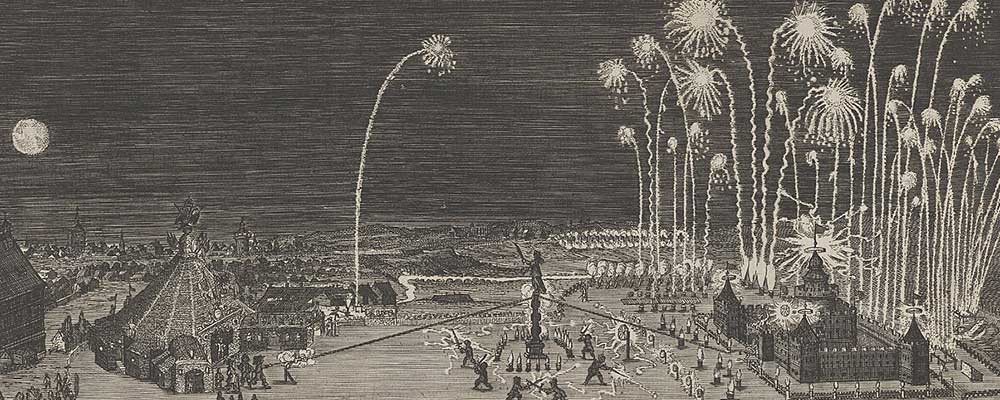
Central to the peace settlement was the recognition of state sovereignty. Every ruler within the empire now had the right to choose the religion of his realm: Catholic, Lutheran or Calvinist. This settled the decades-old question of princely rights, and effectively ended the era of large-scale religious wars in Europe. Diplomacy, not divine authority, was to be the foundation of political legitimacy from now on. The Peace of Westphalia marked the coming of age of the modern nation-state, built on territorial integrity and mutual recognition rather than religious homogeneity.
Territorially, the treaty was a mixed bag. France, emerging as the undisputed dominant power on the continent, added Alsace and cemented its control of Western Europe. Sweden, the other beneficiary of the war, was rewarded with control over key Baltic ports, and went on to become a northern European power. The independence of the Dutch Republic and the Swiss Confederacy was formally recognized. At the same time, the Holy Roman Empire itself was left a shadow of its former self, hollowed out into hundreds of semi-autonomous states. It would be left for new powers to rise in the empire’s wake: Brandenburg-Prussia and Austria.
But Westphalia also set down precedents for European diplomacy that would last. The treaty established the concept of neutrality and regularized diplomatic protocol and practice. It also set down, in a Europe exhausted by war, the principle that no single ruler or religion could dominate the continent. Westphalia did not end the war in Europe, but the new framework for international relations favored negotiation over annihilation. “It brought order out of chaos”, a later historian wrote, “not by faith, but by reason”. For medieval universalism, it signaled a swan song.
In the centuries that followed, the Westphalian model would underpin the foundations of international law and the modern system of diplomacy. The treaties of 1648, forged in blood, did what no army could: they stabilized Europe through political compromise. The Peace of Westphalia closed one of the darkest chapters in human history, and opened a new age in which the fate of nations would be determined, not by the sword of faith, but by the balance of power.
Legacy of the Thirty Years’ War
The Thirty Years’ War that had begun as a conflict of faith ended as a victory for pragmatism. The confessional age, driven by religious passion and papal politics, gave way to a new era of worldly politics and diplomacy. After 1648, princes and kings were less likely to see themselves as divinely-inspired rulers than as mortal statesmen concerned with the business of governance. The war forged a more secular political order in which rulers were more concerned with power than with piety.
The war also destroyed the religious unity of Christendom. The old notion of a singular Christian commonwealth, with all states gathered beneath the banner of the true faith, was gone. In its place was the idea of coexistence, a concept as much political as religious, based on the practical necessities of survival. The religious wars in Europe had not ended the European tradition of holy war, but they had ended the ambition of waging holy war on a continental or global scale.

The Peace of Westphalia created the first truly international system in history. It was the first time a political settlement explicitly recognized the concepts of state sovereignty and equality, laying the foundation for what we now know as international law. This “Westphalian order” introduced a new politics of balance of power that replaced dynastic empire as the organizing principle of European international relations for the next three centuries.
In material and human terms, the war had left its scars on Europe for generations. Central Europe was the hardest hit, with the states of Germany suffering by far the most tremendous loss of life and property damage. The most conservative estimates put the dead at eight million, an astounding figure for a continent with a total population of less than 100 million. The war had not only killed soldiers, but also civilians, refugees, and the victims of famine and disease. It had left farmlands and towns depopulated, and trade networks in tatters. The economic and social recovery of the German states, and indeed of much of Europe, would take decades or even centuries.
The memory of the war had also left its mark on European culture. The scale of the conflict and the brutality it inspired would inform art, literature, and philosophy for the remainder of the age of Absolutism and well into the Enlightenment. The great image of Europe’s collective memory was of a continent despoiled, a world in which old ideas no longer seemed sufficient, and old certainties had been destroyed. In a continent ravaged by religious fanaticism, fear, and human suffering, the greatest gift of Westphalia may have been an appreciation of human limitations.
From Faith to Diplomacy: Europe Reforged
The transition from religious to secular was gradual and occurred throughout the Thirty Years’ War. As it progressed, the conflict shifted from a religious contest to a struggle over state power and individual rulers’ aspirations to increase their own influence and authority. In the beginning, the war’s causes were guided by divine and righteous religious ideals, but by the end, these had been replaced by the need to survive.
At the conclusion of the Thirty Years’ War, there was an abundance of national and individual actors who had to find the will and wherewithal to work together to end the conflict. They also had to transition from waging a religious war to one of practicality and reason. The drive for religious purity had to be replaced by practical measures that could be institutionalised. The bloodshed had to end so the participants could begin rebuilding their lives.
The Peace of Westphalia effectively reinvented Europe. It brought an end to the idea of Europe as a single Christendom. A unified Christendom was impossible, and instead the region became an aggregation of states. This had two major effects. The first was the development of mutually recognised states, regulated by international law. The second change was that the authority of the states became separated from religious influence.




